Skirting Color // Stitching Code
Skirting Color // Stitching Code:
Durational performance with sewing machine, laptop, skirt, code, thread.
Instructions:
Reflect Josef Albers’ color studies in HTML and CSS.
Stitch lines of code into your skirt.1st movement: orange;
2nd movement: black;
3rd movement: blue;
In Skirting Color // Stitching Code, the actions of a performer alternate between live coding a Josef Albers color study website and manually machine embroidering the same HTML and CSS into her skirt. Throughout the piece, the artist alternates sitting at a pair of adjacent desks – one holds a computer and the other, a sewing machine. She wears a full skirt and a simple blouse, each sewn from neutral grey fabric.
As the HTML and CSS trace her hem, the performer repeatedly stands up and turns the skirt around her waist to continue sewing. As she types and live-edits the HTML and CSS to reflect the Albers color studies, the audience is invited to view a projection of trial and error inherent to laying out boxes in a browser and refreshing for accuracy. As the performance cycles into actions of coding, stitching and turning the skirt, the gestures of the performer become repetitive and loop through three movements: orange, black, and blue.
Skirting Color // Stitching Code was developed in the artist’s first year living in Asheville, North Carolina near the site of Black Mountain College, where Josef and Anni Albers lived and taught from 1933-1949. This piece may be performed in multiple iterations until the costume surface is covered in code.
Iterations:
{Re}Happening 2017, Black Mountain, North Carolina
xCoAx 2017, Lisbon, Portugal


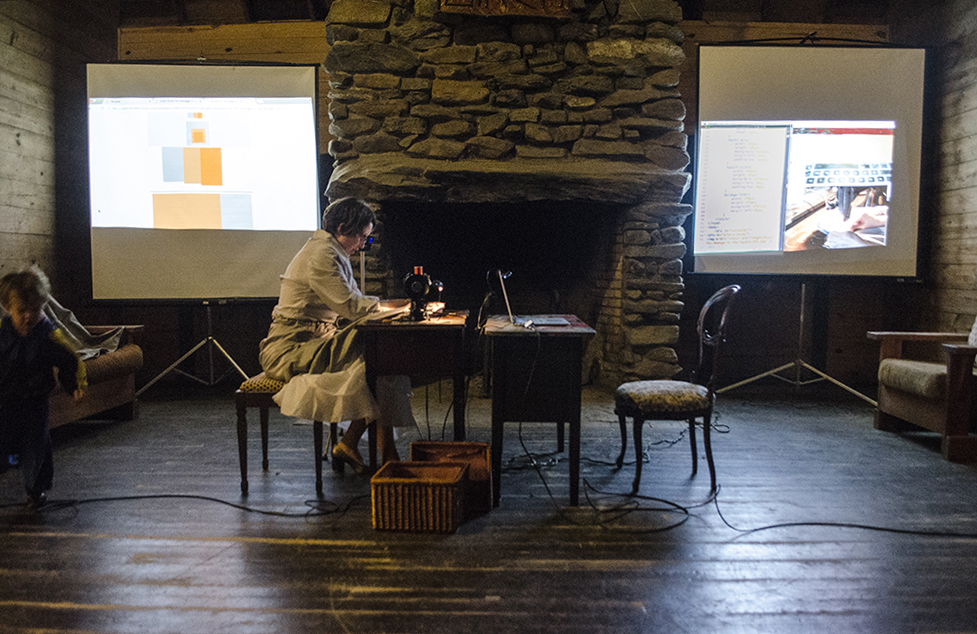

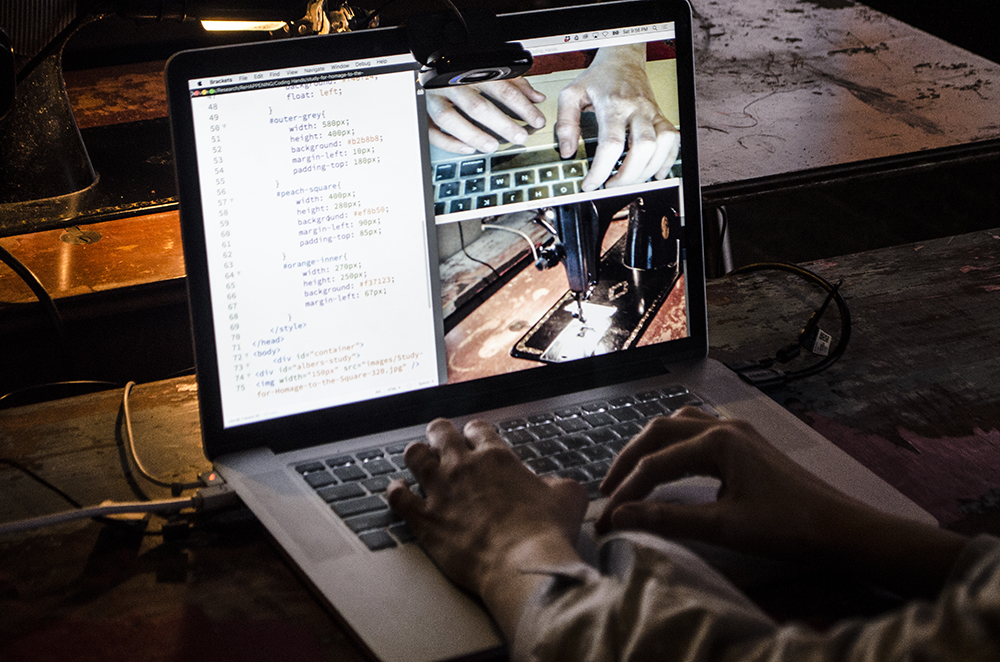
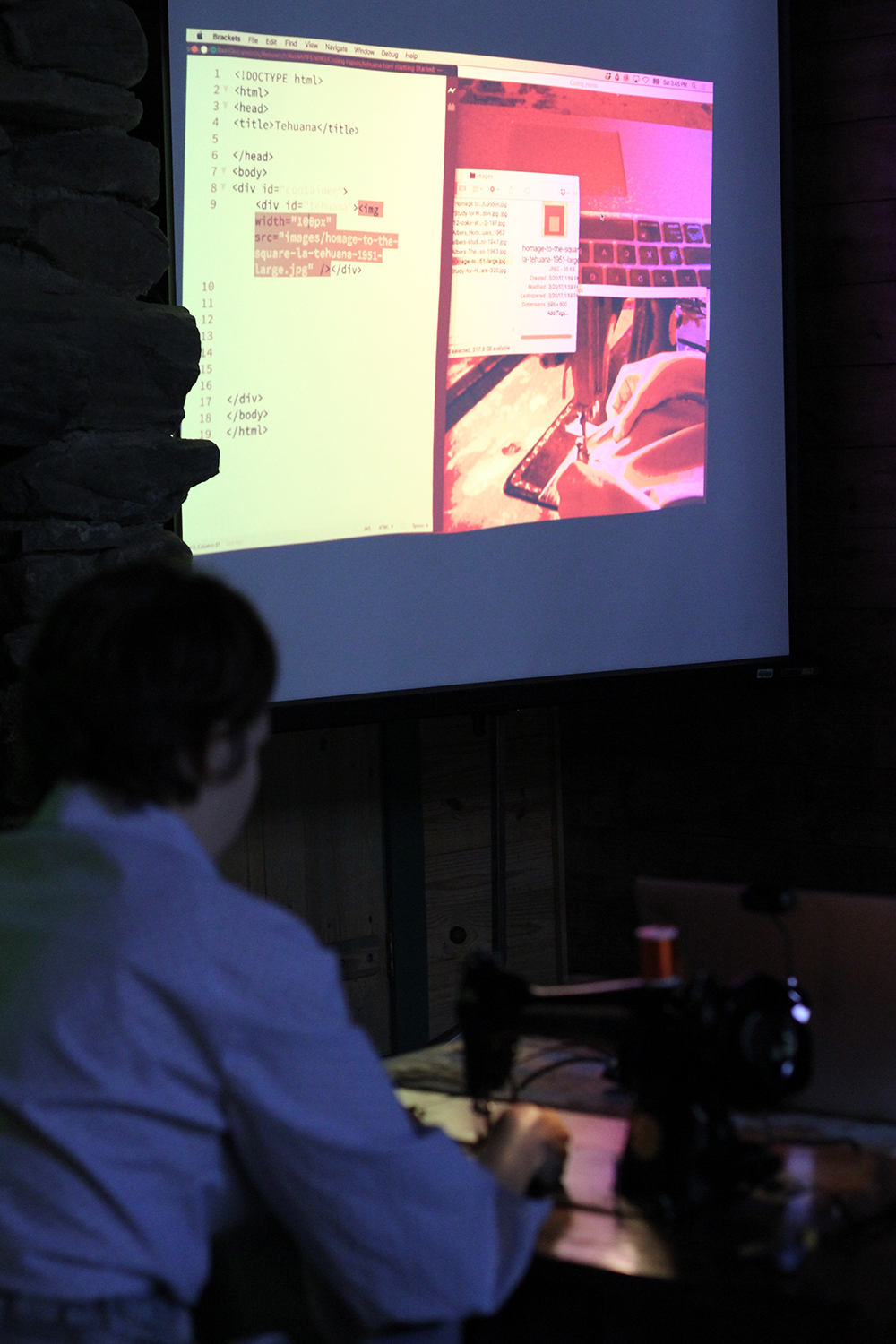
The stitched code is incomplete. What was at first ephemeral, fleeting, and open to being changed and updated is made permanent as it is stitched into the fibers of the skirt. It cannot be copied and used to reproduce the webpages that are projected in the performance. It instead represents snippets of live moments, frozen in time as excerpts that shift each time the performer stands to adjust the code on-screen, updating the colors and images viewed through the opposite projection.
The layout of the room creates an equilibrium between gestures of sewing and coding that represent two kinds of work: domestic labor and business labor. The performer loops between the two with seemless, yet arduous repetition.
In addition to Josef Albers, Skirting Color // Stitching Code references a work by Fluxus artist Alison Knowles, Color Music #2, from 1963, from which the orange, black and blue movements are derived.

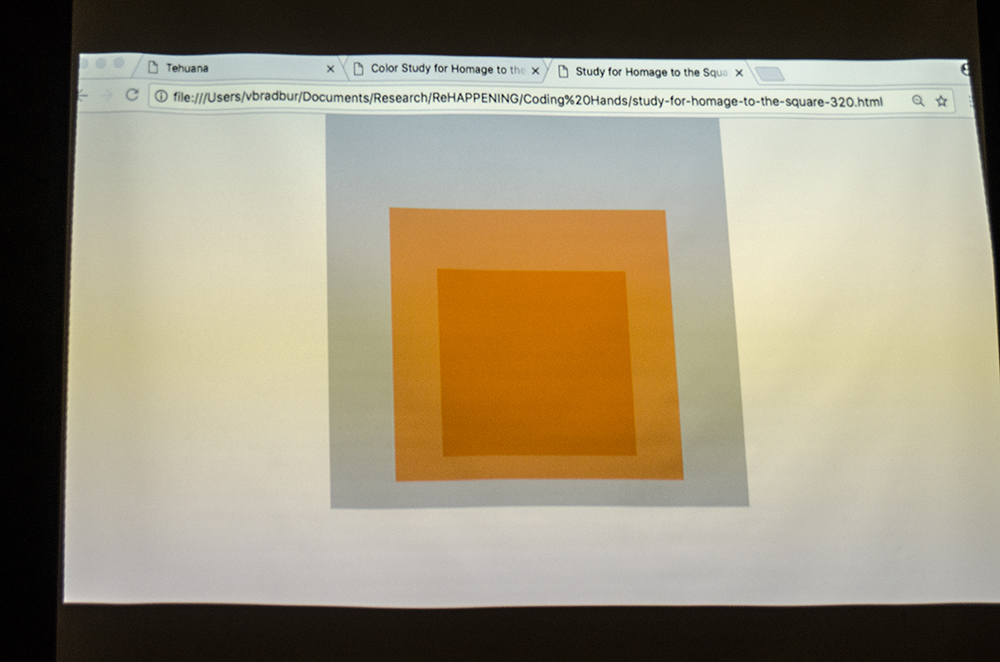
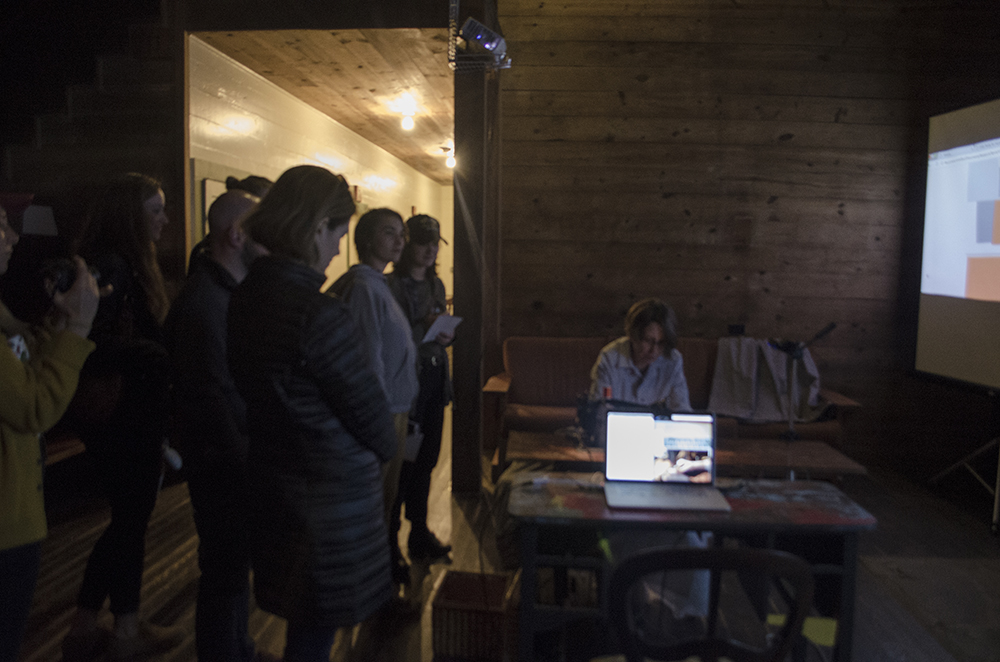


Skirting Color // Stitching Code was first performed at the 2017 {Re}Happening in Black Mountian, NC. It was supported by The Black Mountain College Museum + Arts Center and The University of North Carolina Asheville Department of New Media.